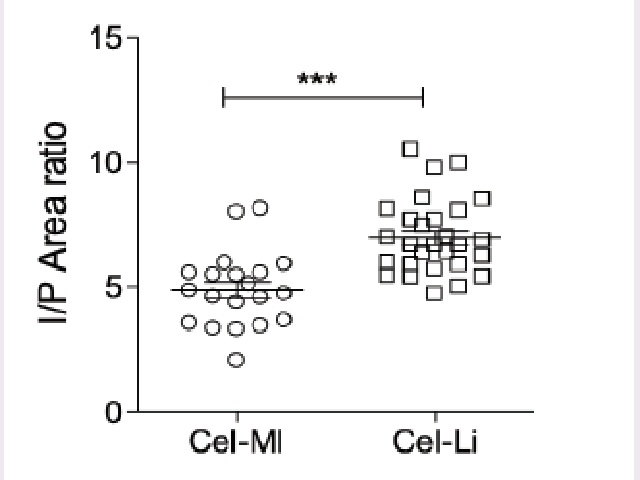A Retrospective Analysis of the Merit of Iris-pupil Area Ratio as a Predictor of Risk of Myocardial Infarction
DOI:
https://doi.org/10.5530/bems.5.2.8Keywords:
Iris-pupillary ratio, Sympathetic activity, Myocardial infarction, Risk analysis, Risk predictionAbstract
Background: We have recently reported the utility of iris-pupil area ratio as a sensitive index of borderline changes in sympathetic activity and the stress associated with it in primates and canines. As minimal increase in sympathetic activity can lead to micro vascular constriction, which is often observed in patients suffering from myocardial infarction, we hypothesised here that iris-pupil area ratio will serve as a predictor of risk of myocardial infarction in humans. Materials and Methods: To test our hypothesis, we analysed and compared the digital images of the eyes of celebrities who succumbed to myocardial infarction with that of healthy celebrities. Most recent digital images of the celebrities available in the public database were used for our analysis. Iris-pupil area ratio of both eyes was measured using NIH Image-J software. Results: The iris-pupil area ratio was significantly lower in celebrities who succumbed to myocardial infarction compared to healthy cohorts (4.875 ± 1.506 Vs. 6.978 ± 1.499; p<0.001). To assess the correlation of age with iris-pupil area ratio we performed regression analysis of the data from each of the cohorts. The age Vs iris-pupil area ratio regression analysis in celebrities who succumbed to myocardial infarction had positive correlation (correlation coefficient of 0.06889), while healthy celebrities showed negative correlation (correlation coefficient of 0.03775). Although the correlation between age and iris-pupil area ratio was weak, a higher negative correlation (correlation coefficient of 0.387) was observed in a cohort of 50 to 80 years old healthy celebrities. Conclusion: The lower iris-pupil area ratio observed in celebrities who succumb to myocardial infarction possibly suggests increased sympathetic activity and microvascular constriction, which supports the merit of iris-pupil area ratio as a non-invasive tool in predicting myocardial infarction.

Downloads
Published
Versions
- 2021-02-16 (2)
- 2021-02-16 (1)









